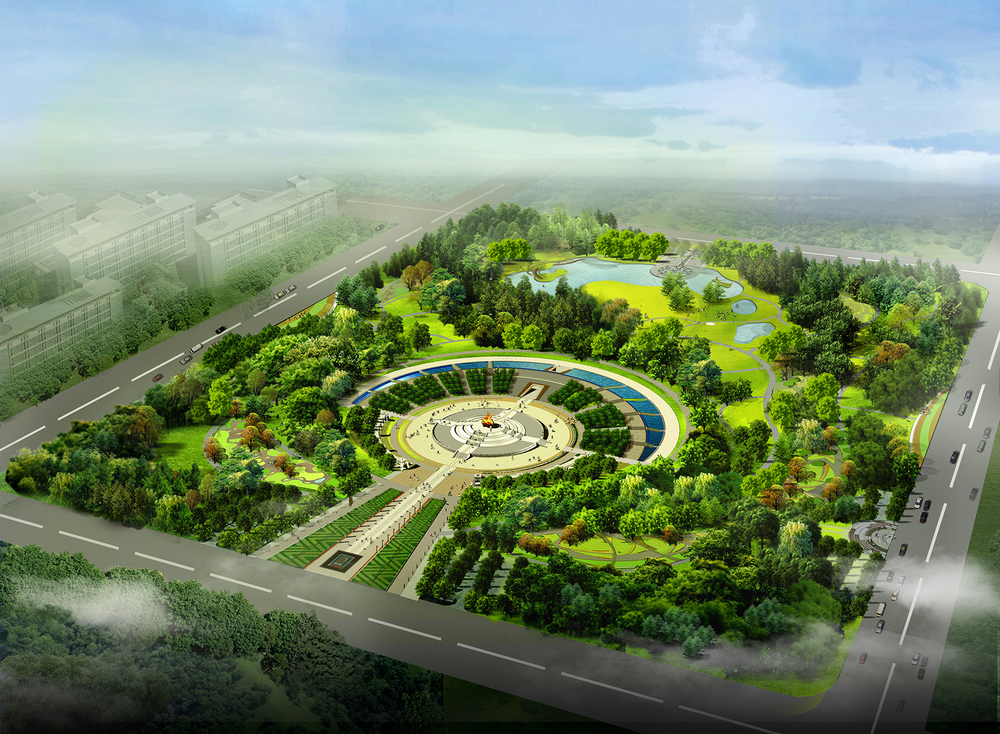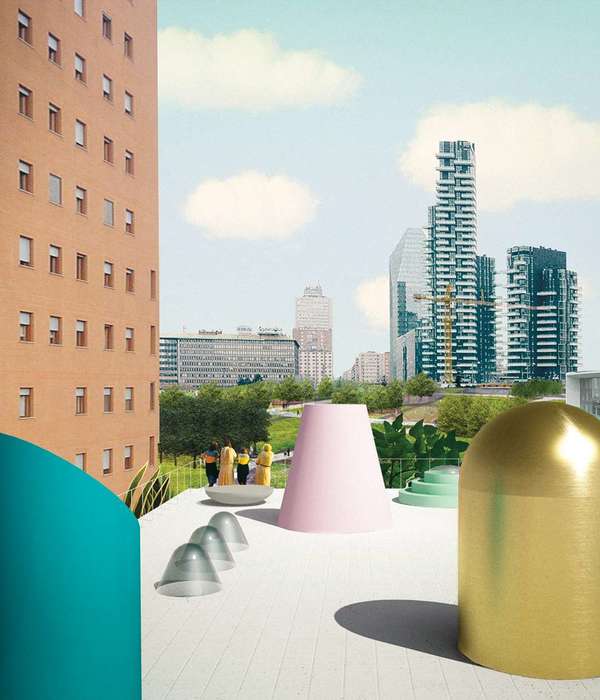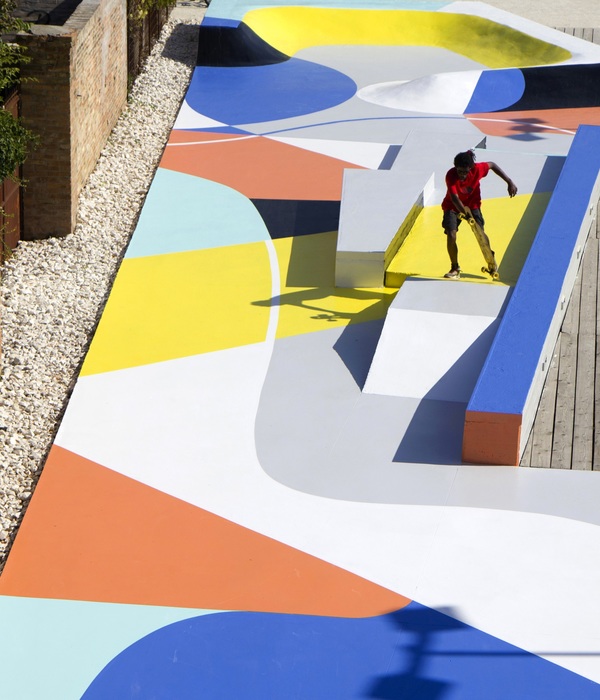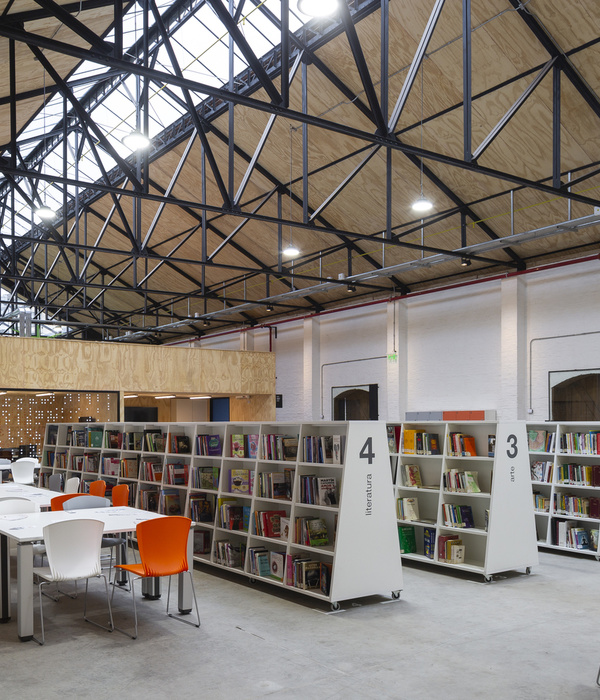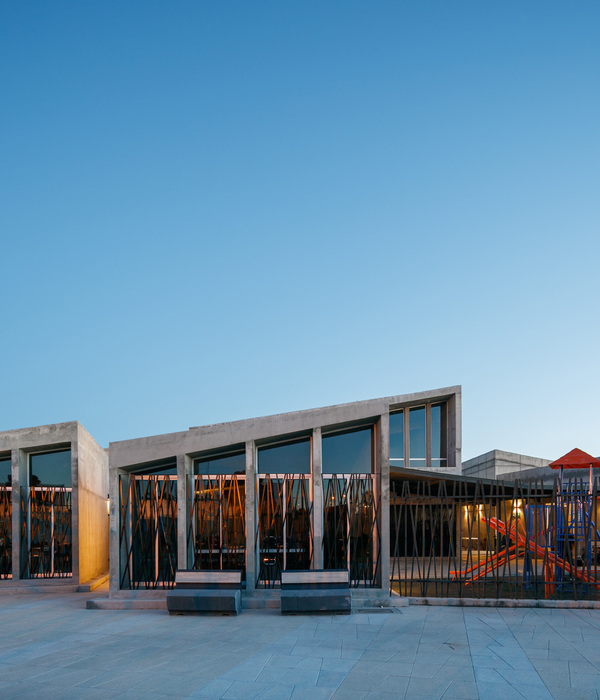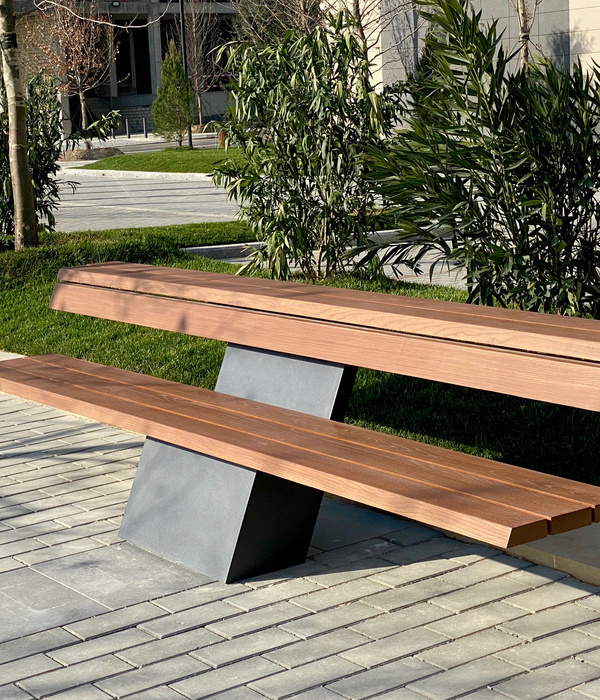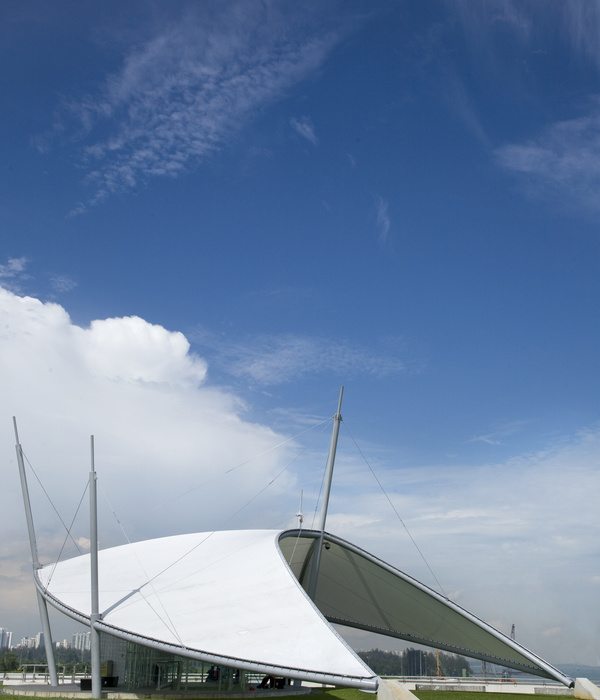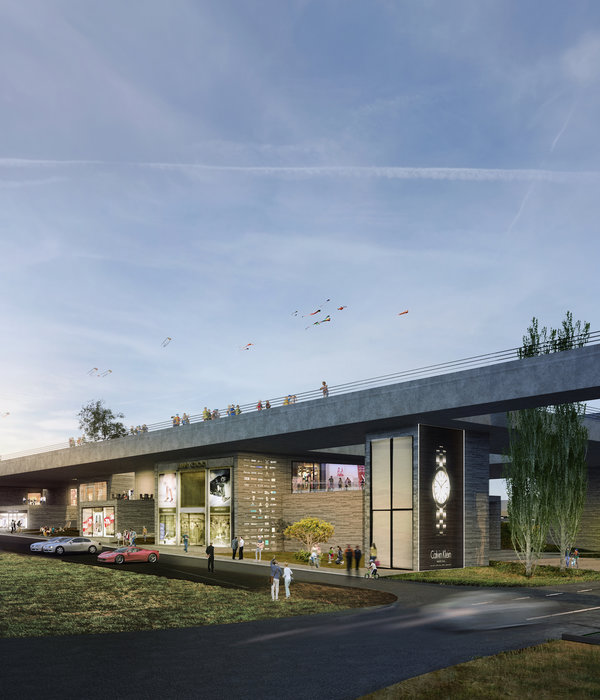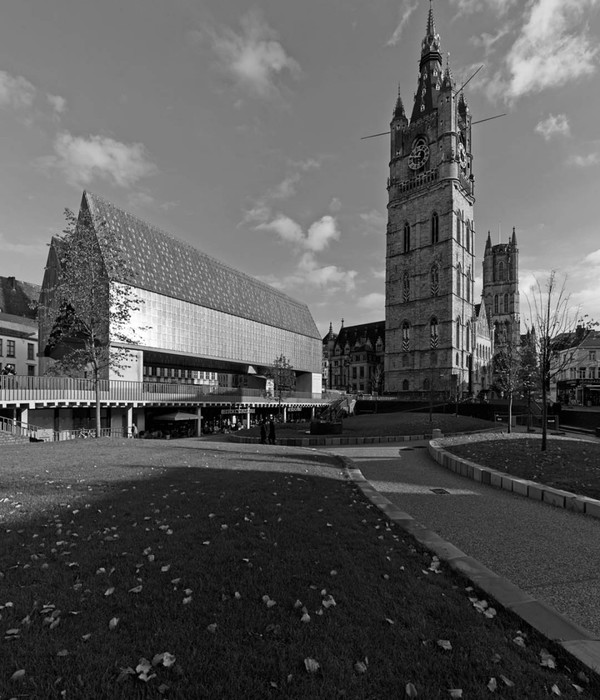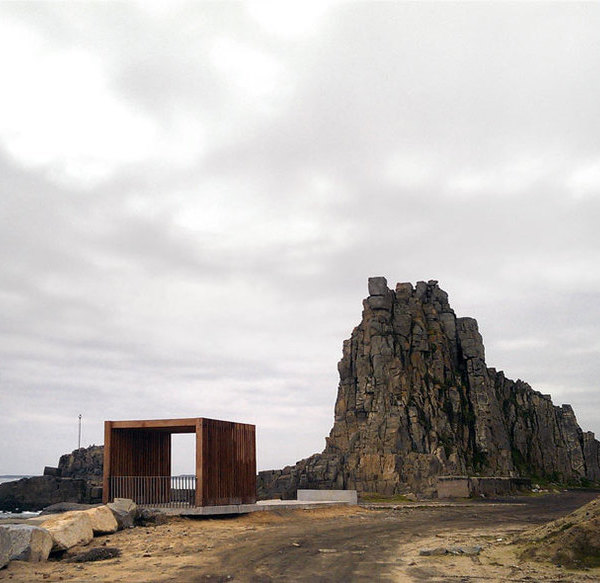蒙古族祭火文化的永恒舞台——鄂托克前旗敖勒召其镇圣火公园
- 项目名称:内蒙古鄂托克前旗敖勒召其镇圣火公园
- 公司网站:www.iula.cn
- 联系邮箱:iula@vip.sina.com
- 主创:朱敬中,郑蕾,王志磊
- 设计团队:史超,牟林,李庆
- 项目地址:内蒙古鄂托克前旗
- 景观面积:57公顷
- 摄影版权:北京城市景观研究院
- 客户:内蒙古鄂托克前旗住建局
敖勒召其镇是内蒙古西南部鄂托克前旗旗府所在地,以蒙古族为主,民族风情浓厚。随着城市化进程,一部分牧民进城住上楼房并享受起了城市人的生活,然而古老的根植于内心的民族习俗难以忘怀,那就是祭火文化。蒙古民族对火的崇拜由来已久,认为火象征纯洁是神灵的化身,灶火是民族、部落和家庭的保护神,能赐予人们幸福和财富,可保佑家族人丁兴旺。因此蒙古包和房屋里的炉灶、火盆、篝火堆等,都被视为火神而加以崇拜。为更好地传承、弘扬和保护优秀民族非物质文化遗产,鄂托克前旗委、政府委托我们设计了圣火文化公园,并于辛卯年(2012年)腊月廿四举行了首次公祭和民间祭祀圣火活动,此后每年按期举行公祭和民间祭祀活动,极好地弘扬了蒙元文化,传承了蒙古民族祭火拜火的民族风俗。
The Aolezhaoqi Town is the head place of the Otog Front Banner in the southwest of Inner Mongolia. It is dominated by the Mongolian people and has a strong ethnic customs. With the urbanization process, some herdsmen go to the city to live in the building and enjoy the life of the urban people. However, the ancient national customs rooted in their hearts is unforgettable, that is the sacrificial fire culture. The Mongolian people have worshipped the fire for long-standing. They believe that the fire symbolizes purity as the embodiment of the gods. The fire is the protection god of the nation, the tribe and the family. It can give people happiness, wealth and protect the family have a flourishing population. Therefore, stoves, braziers, and bonfires in the Mongolianyurts and houses and are considered to be worshipped as god of fire. To further inherit, promote and protect the intangible cultural heritage of outstanding nationalities, the Otog Front Banner Committee and the government entrusted with us to design the Holy Flame Culture Park and held the first public and folk sacrifice fire activities in 2012. Since then, annual public and folk sacrifices were held on schedule which greatly promoted the Mongolian culture.
▼圣火公园鸟瞰,aerial view
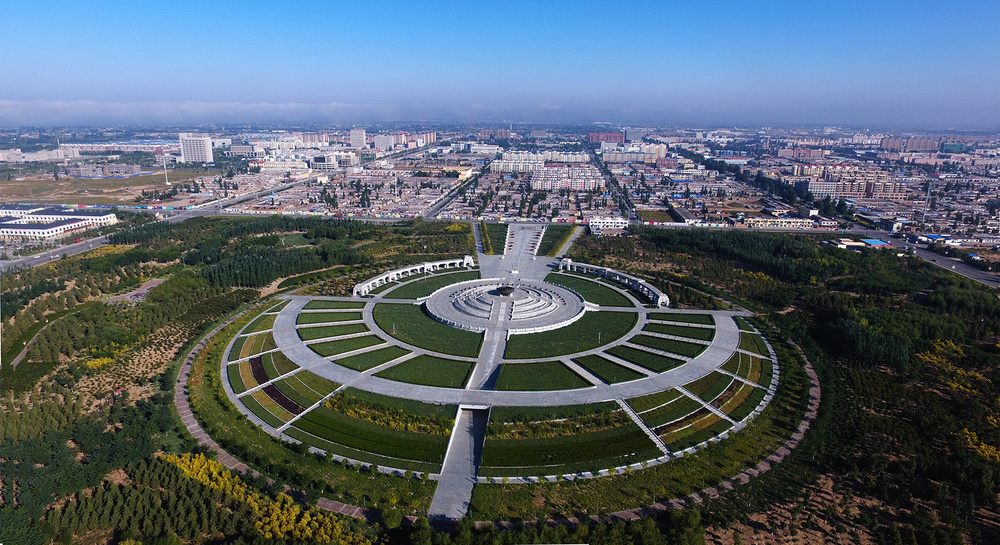
2015年2月12日即甲午马年腊月廿四,在这里举行内蒙古最大规模蒙古族祭火仪式,创造了“最大规模的民间圣火祭祀”,赢得基尼斯驻上海总部的认可,荣获吉尼斯证书。仪式中最大的祭火用锅直径11米、羊胸叉333个、火撑子27个、伊金桑读者99名、白螺号99个。
圣火祭坛的火种,采集自成吉思汗陵陵宫内的圣灯(长明灯)。成吉思汗陵的永不熄灭的“蒙克珠拉”,是香火的象征,幸福的向往、吉祥的祝福,它已经整整延续了八百多年。取到的“蒙克珠拉”火种寄放于有成吉思汗祭祀活动的鄂前旗哈日哈腾庙(大庙),后历年祭火火种从哈日哈腾庙取火。
每年的迎取圣火火种仪式由民间祭祀文化协会组织,在圣火文化公园广场禄马台前出发取火。取火种的队伍来到禄马台下面,祭天祭祖后,携带取火种物品和礼品,在欢送队伍和马队的护送下出发去哈日哈腾庙取火。取火队伍取到火种后,护送火种到达圣火公园,在迎接队伍的列队欢迎下进入圣火公园祭祀活动现场。火种迎取人首先祭祀禄马风旗,从火种盒里点燃火炬,走向祭火台将火炬交给点火人,点火人(德高望重的人)登上主火盆平台点燃主火盆和各镇的分火炬,在宣读祭文的过程中分火炬手分别点燃环祭火台四周的27个分火撑,开始公祭和民间祭祀活动。活动照传统祭祀程序向祭灶火撑敬放祭品、吟诵祭火祝词(祭灶词)、祭献“斯日吉木”、诵招福词、食用“嘎林布达”(祭灶饭)等程序。
敖勒召其镇圣火公园祭祀圣火活动,具有深刻的内涵,它是鄂托克前旗各族人民对草原文化繁荣发展的祝愿,是各族人民向往美好未来的祈祷,也是保护、传承、弘扬民族传统文化的具体表现。
▼传统祭祀圣火活动, the traditional celebration of the holy fire
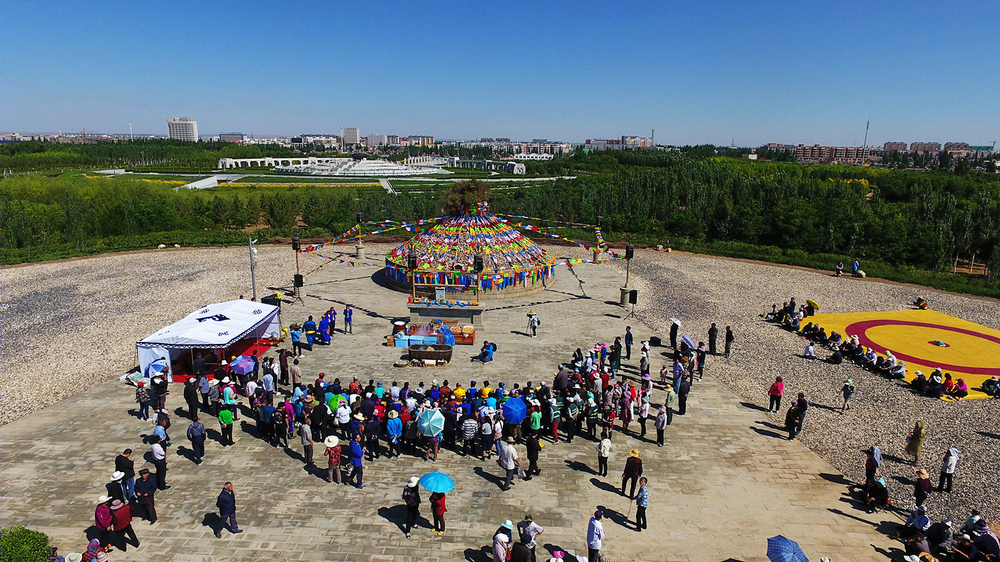
▼圣火公园的祭祀, the celebration in the Holy Fire Park
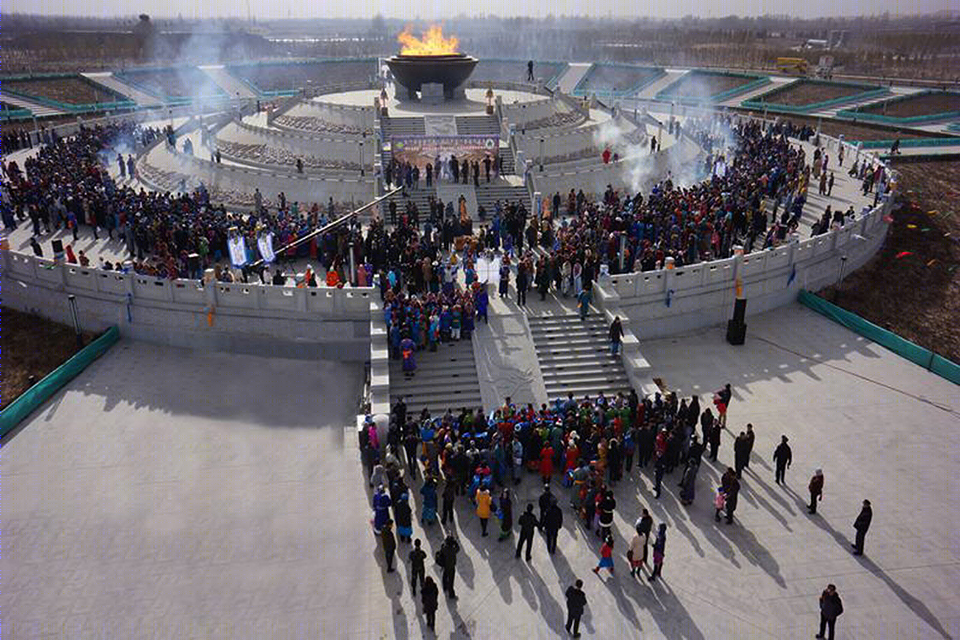
On February 12, 2015, the 24th day twelfth month of Lunar Horse Year of the Han Dynasty, the largest Mongolian sacrifice fire ceremony was held in Inner Mongolia, created the largest scale of folk sacrifice fire, gained the recognition of the Guinness headquarters in Shanghai and wined the Guinness Certificate. The largest fire sacrifice pot in the ceremony was 11 meters in diameter, 333 sheep thoracic wishbones, 27 fire shelves, 99 Yijinsang readers, and 99 White conch.
The fire of the holy fire altar is collected from the holy light ( eternal Lantern) in the Mausoleum of Genghis Khan. The never-extinguishing Mengkezhula of Genghis Khan’s Mausoleum is a symbol of incense, a happy yearning and auspicious blessing and it has lasted for more than 800 years. The Mengkezhula fire was taken in the Harihateng temple (big temple) of the Eqian Banner with the Genghis Khan sacrifice activities. After that, the fire was lighted from the Hari hateng Temple.
The annual welcoming ceremony of the sacred fire is organized by the Folk Sacrifice Cultural Association and set off to get fire in front of the Lumatai of the Holy Fire Culture Park Square. The team that take the fire come to the base of Lumatai after they worship heaven and ancestors sacrifice, they take the items and gifts and set off to the Harihateng Temple for fire under the escort of the farewell team and the horse team. After the fire team take the fire, escort the fire to the Holy Fire Park and enter the Holy Fire Park Sacrifice Activity at the welcome of the team. The fire greet man first to worship the Luma Fengqi flag and ignites the torch from the fire box, and goes to the fire station to hand the torch to the ignition people. The ignition people (the highly respected person) boards the main brazier platform to ignite the main brazier and the torch of each town. In the process of reading the rituals, the torchbearers respectively ignite 27 fire-supporting ceremonies around the ring of fire, and begin public sacrifices and folk ritual activities. According to the traditional ritual procedure, the sacrifices are held to the ceremonial fire, and the sacrifices, the rituals of the rituals (the sacred words), the sacrifices of the Sirijimu, the sacred words, and the “Galinbuda” (the sacred food) are used.
It is a profound connotation for the celebration of the holy fire in the Holy Fire Park of Aolezhaoqi Town. It is the wish for the prosperity and development of the grassland culture of all ethnic people in Otog Front Banner, the prayer for a better future of the people of all nationalities and the protection, inheritance and promotion of specific expression of national traditional culture.
▼石制拓印,The stone rubbing

敖勒召其镇圣火主题公园用地57公顷,以蒙古族祭火传统习俗为依托而设计,是展示民族传统文化的重要场所。整体公园平面布局为葫芦形,开口向上,隐喻蒙古族“福禄”文化。北中心为圣火祭祀广场,南中心为湖面水景。一阴一阳,暗喻“阴阳相生成太极”的宇宙观念。
It covers 57 hectares land of the Holy Fire Park of Aolezhaoqi Town. It is designed with the traditional customs of Mongolian fire sacrifice traditional custom and is an important place to display the traditional culture of the nation. The plane layout of the overall park is a gourd-shaped, open side up, metaphorical Mongolian happiness culture. The north center is the Holy Fire Sacrifice Square, and the south center is the lake waters cape. The Yin and Yang that is the metaphor of the Yin and Yang generates of the world. The northern fire square is a circular composition symbolizing the sun that is the eternal god longevity of Mongolian .
▼平面图,plan
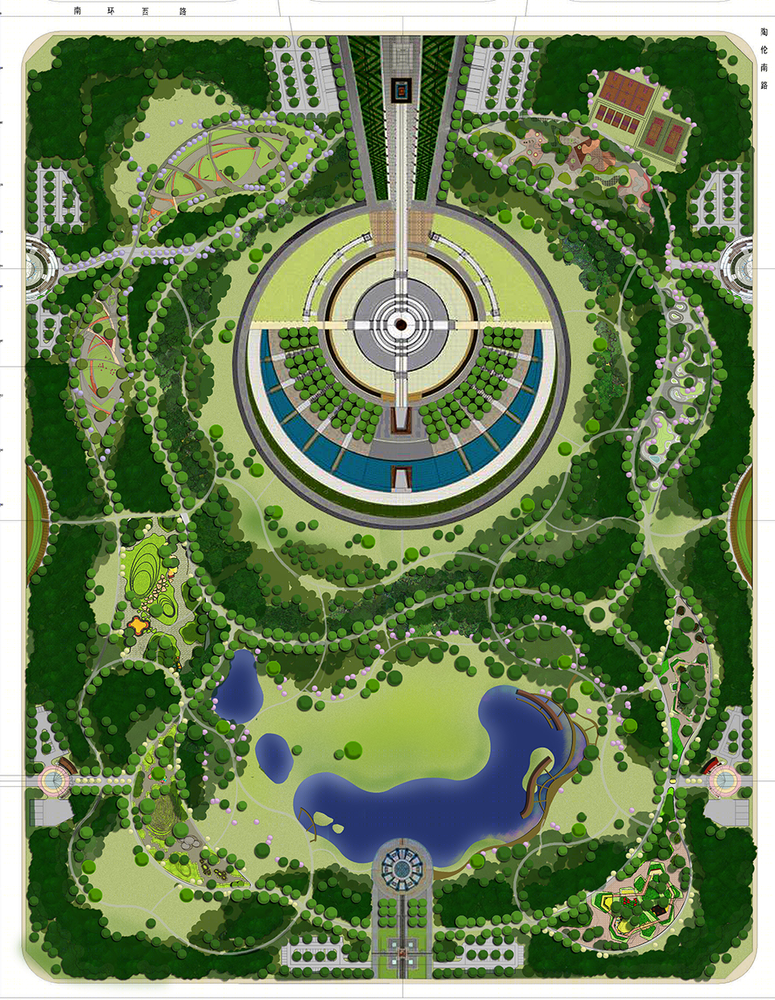
北面圣火广场为圆形构图象征“太阳”,即蒙古族永恒神灵“长生天”。构图由日、月组成,中间圣火台为“日”,南部弧形景观台为“月”,暗指宇宙万物永恒不灭、本源阴阳。北入口为楔形,引导式从北向南插入中心。石制拓印“敖勒召其镇圣火公园”点明公园主题。顺路前行,途径两侧为九座高举的“圣火灯”,在两侧蒙纹绿篱陪衬下进入中心“圣火台”,拉开整个祭火序幕。
The composition consists of sun and moon, the center of the holy fire podium is sun and the southern curved landscape is moon which implies that everything in the universe is eternal and the origin of Yin and Yang. The north entrance is wedge-shaped and the guided insert from the north to the south. The stone rubbing Holy Flame Park of Aolezhaoqi Town point out the theme of the park. On the way, the two sides of the road are nine high-profile holy lights, accompanied by the Mongolian decorative pattern green fence of the two sides, entering the center holy fire stage, open the entire fire ceremony. The holy fire stage is divided into four entrances as east, west, north and south which are three sets of steps and each with nine levels. Stepping into the center holy brazier also is the core part of the ceremony.
▼入口道路两侧伫立着九座“圣火灯”,nine high-profile holy lights stand along the entry way
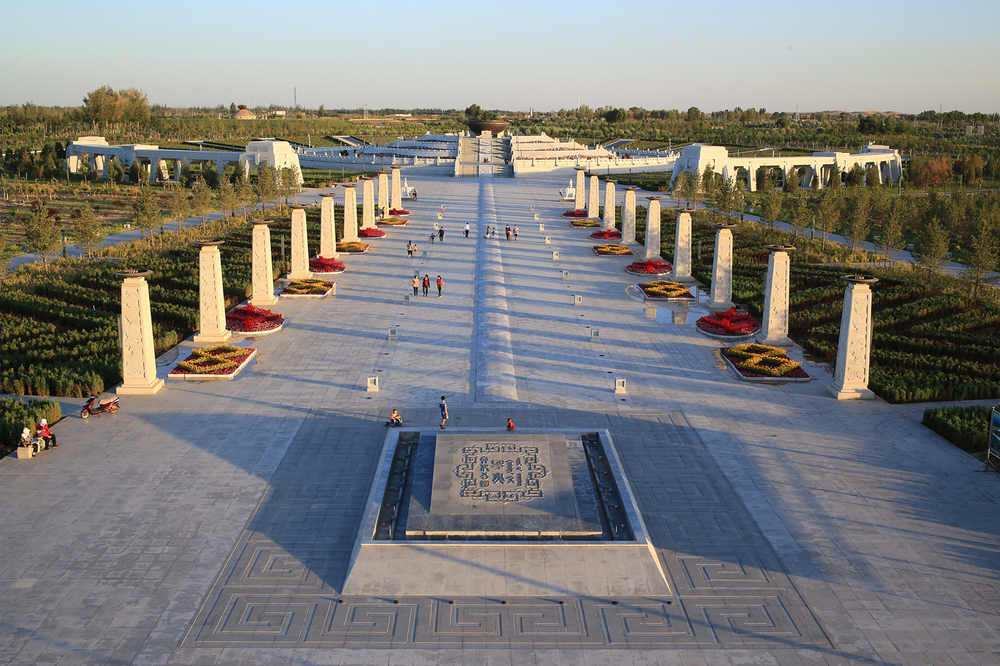
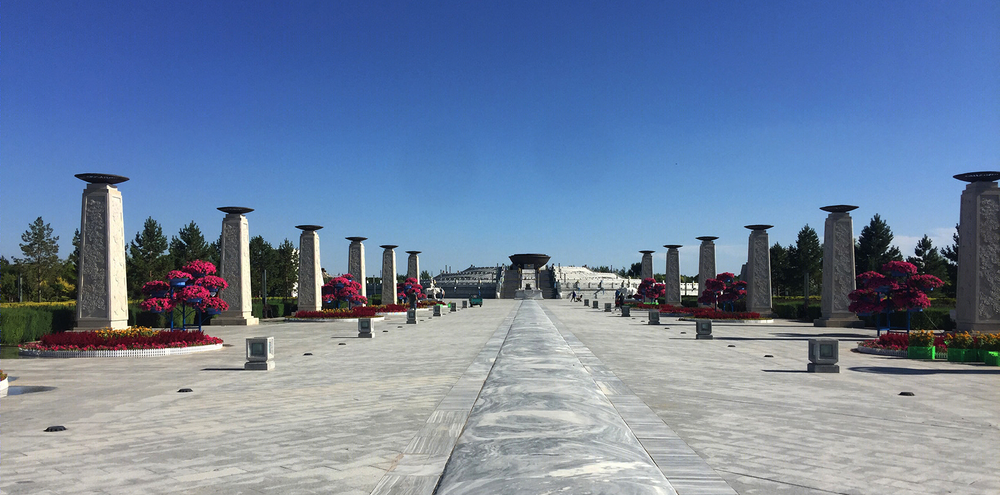
圣火台分“东西南北”四入口,分别为三组台阶,每组九级。步入中心“圣火盆”,也是祭火仪式的核心环节。“圣火台”由北边蒙式廊架环抱合围,与南边渐渐坡起的“月牙形”缓坡围合形成庄严的圣火祭祀场。
The holy fire stage is surrounded by a Mongolian-style porch in the north, and is surrounded by a crescent-shaped gentle slope that gradually slopes in the south to form a solemn sacred fire place.
▼圣火台,the holy fire stage
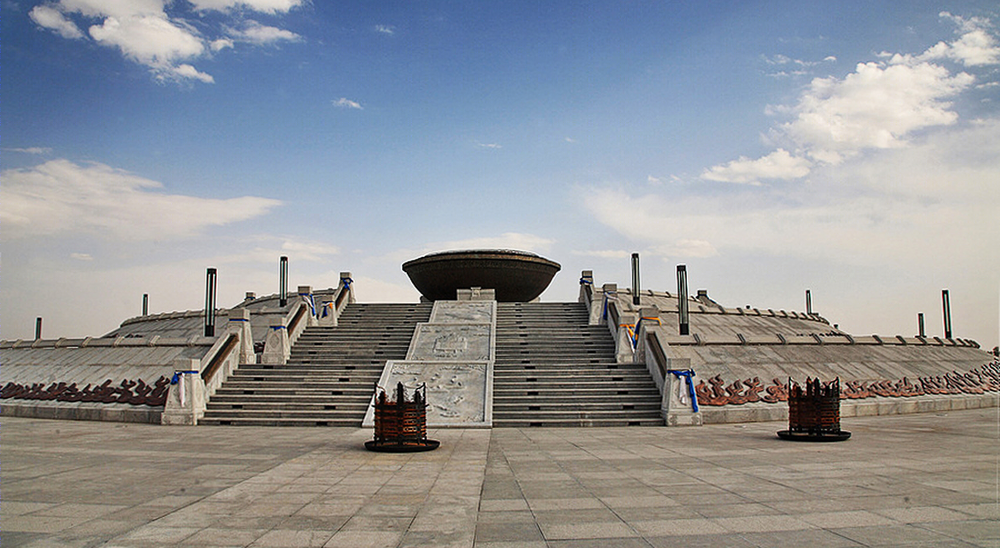
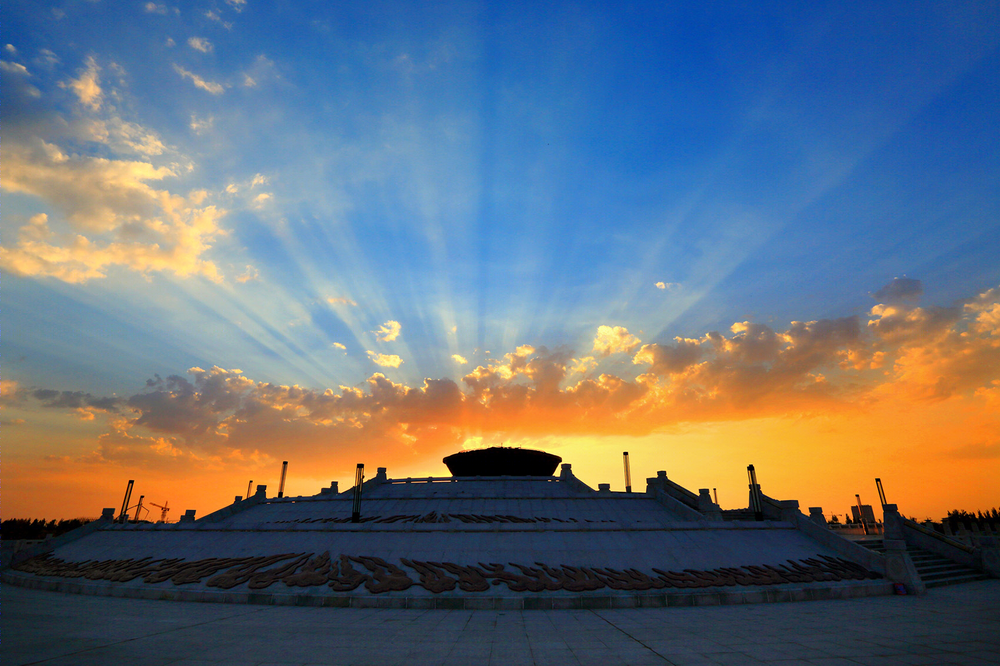
南部区域以湖景为主,轻松自然,结合大片的疏林草坪与多变起伏的地形形成舒展而富于变化的滨湖休闲景观,配合北方的适合生长植物,与北部庄严的祭火场面形成对比。四周为自由松弛的散步道,穿插以各种活动设施为广大市民提供休闲去处。
The southern part is dominated by lake views, easy and natural, combines large areas of sparse forest lawns and undulating terrain to form a stretched and varied lakeside leisure landscape with plants suitable for growing in the north forms contrast with a solemn fire scene in the northern part. Surrounded by free and relaxing walkway and with various activities facilities to provide a relaxing place for the general public.
▼南部湖景,the holy fire stage faces the lake to the south
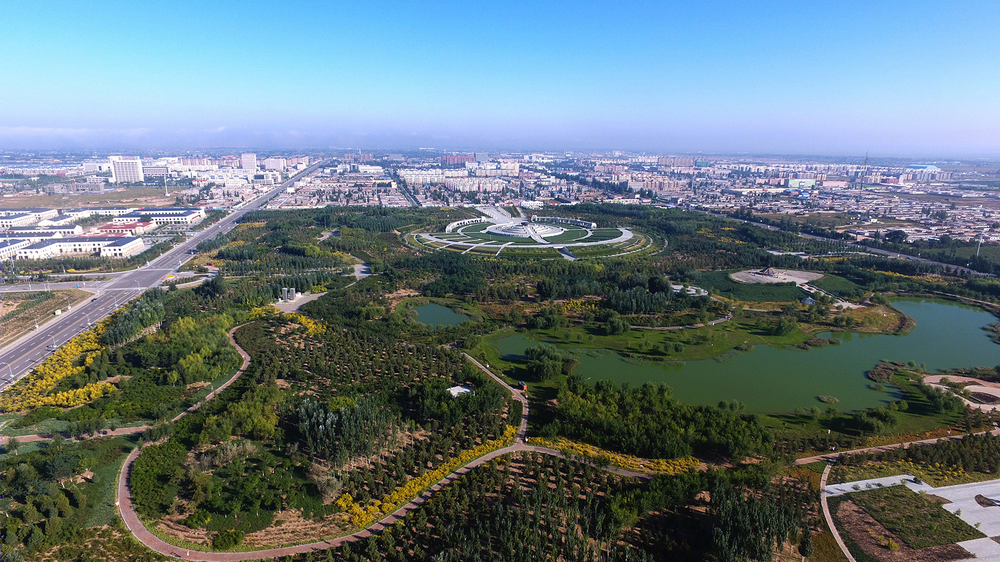
▼效果图,rendering
